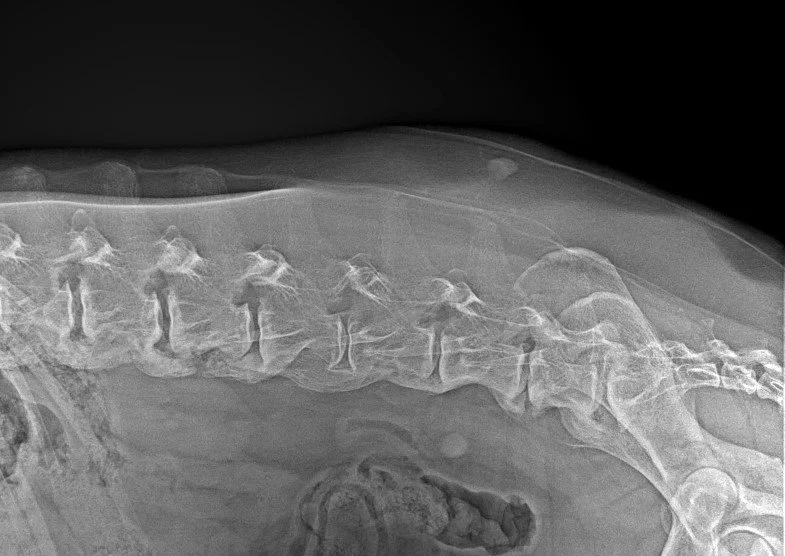Spondylarthrosis
cases of Spondylarthrosis deformans
in different patients

Female, 6 yo, 37 kg Flat Coated Retriever
Presented with chronic intermittent 1 grade forelimb lameness.
regularly active, running and jumping.
Orthopedic examination detect altered gait characterized by low head position with pain response on lumbar spine palpation.
X-ray was performed with awake patient.
Diagnosis of severe Spondylarthrosis deformans.
It has been hypothesized that the forelimb lameness in this patient was secondary to patient’s tendency to shift its body weight towards forelimb due to back pain.
Female, 12 yo, 33 kg Labrador Retriever
Patient was referred for suspected back pain, difficulty to jump, reluctant to move. Owner also reported behavioral changes such as reduced activity and interest during leash-walks, avoid playing and seems generally depressed.
Orthopedic examination detect altered gait characterized by lumbar kyphosis, tendency to sit down / lie down. X-ray was performed with awake patient.
Diagnosis of severe Spondylarthrosis deformans in lumbosacral region.
Female, 10 yo, 28 kg Golden Retriever
Patient was referred for stiff gait and occasional spontaneous left hindlimb dorsiflexion (dragging of hindlimb).
Orthopedic examination detects altered gait, patient avoid sitting down, with normal postural reaction (proprioception) on all 4 limbs.
Diagnosis of severe Spondylarthrosis
in lumbosacral region.
Patient is also affected by severe bilateral Elbow Dysplasia and bilateral Gonarthrosis.
Spondylarthrosis is a non-inflammatory degenerative condition that affects the vertebral bones of the spine. Osteophytes may form a complete bridge between adjacent vertebral bones, which is commonly referred to as “Spondylosis Deformans”.
Treatment depends on clinical signs of the patient and is mainly conservative. Conservative treatment includes weight reduction, controlled exercise, physiotherapy, and pain management initially with NSAID’s with/without additional pharmacological treatment options.
Prognosis is determined by diagnostic imaging and patient’s response to treatment.
Read more about this condition: Spondylarthrosis




